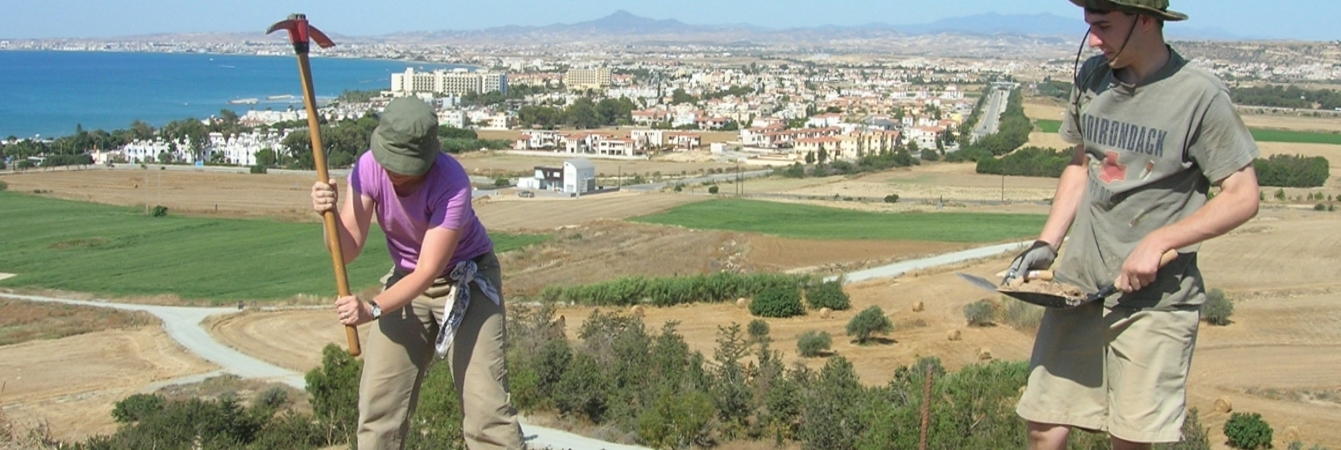| Descriptive Attribute | Value(s) |
|---|---|
| Summary |
Directly under SU 7109, and the eastern portion of 7110; debris under fill/top soil layer; possibly part of wall 7112_f1. Dry sieve. Other find bag: tile Labels-- Per museum request, we are labeling using "ceramic", "tile", & "plaster", whereas before we used "mortar" & "ceramic" for both pottery & tile. This change is a result of our new policy of keeping tile and plaster in the field. |
| Date Excavated | 2009-06-05 |
| Min Elevation | 7.18 |
| Max Elevation | 7.3 |
| Description |
This SU was begun because of an apparent soil change (color), but it quickly becomes clear that it was only a small pocket—a very thin lens of slightly differently colored soil, mainly in SU corner, and once we are through it we came into the same pinkish gray material encountered in SU 7109. The soil remains firm and the debris heavily concentrated. We are trying to find the southern face to the wall, but so far have not been able to do so. Sarah has suggested that the wall was filled with debris and faced with stones—this seems more and more likely to me as we go. It would also fit the 2 phase hypothesis we are currently advancing. Given the limit so four trench w may want to abandon this endeavor—we’d need to extend south to really get a feel for it and ascertain the wall’s function probably won’t be possible. This SU comes down on the 1st course of facing stones along the north side of the wall, a debris core is confirmed by digging some of the interior away, which remains densely compacted and full of mortar frags, stones, tiles, and some gypsum. 16/6/09 Addendum: The lens can, I think, be explained by a concentration of very brittle tiles/ceramics with red fabric, concentrated in SE—they seem to have broken apart and littered into the soil (somewhat as the plaster has). Bottom Elevations: E: 7.18, C: 7.18, W: 7.23 7112_f1: Is a wall funning E-W along the south side of EU 13. It was the primary research “target” of this EU. The north face of the wall consists of courses of field stones, some clearly worked but others not. [On the north face we can see some tile and mortar were used as well, again reused material] The lowest course has layer stones in the 15 cm x 25 cm range, while higher courses average 6-10 cm x 15 cm (1st measurement= height, 2nd=length). The bonding material seems to be a simple mud mortar, while the interior is filled with collapse debris from the annex (or other surrounding structure, presumably). The wall’s interior contains mortar frags, roof tiles, gypsum and fieldstone—all of which is extremely compacted. There was so much mortar/plaster in this area, in fact, that the soil was turned a pinkish gray color. W e were not able to articulate the south face of the wall. To do so would have required an extension of the trench, probably 1 meter to the south. On the wall’s west it is bound by a large pier, again reused material from either the annex or another close structure. The pier is 44 cm N-S, 54 cm E-W and we excavated it to a depth of 70 cm, but did not find the bottom. Since it is jammed in the SW corner of the trench, we were not able to study it closely. We originally classified this pier as a gypsum window molding and 7110_f1, but have revised this on SU 7110 form. 15/6/09 Addendum: The wall has a directly relationship with the floor we uncovered (7114_f1), which has allowed to get a terminus post quem for it based on the Byzantine pottery from the floor fill. A functional analysis of the wall isn’t possible at this point. It is possible, although not certain, that SU 7119 is the foundation trench for this wall, though opinions differed (Dimitri thought it was pit of some kind). |
| Munsell | 10YR 7/4 Very Pale Brown |
| Texture | Sandy Clay Loam |
| Consolidation | Fine-grained Sediment: Firm |
| Stoniness | 10 |
| Dominant Clast | Gravel |
| Descriptive Attribute | Value(s) |
|---|---|
| Creator Vocabulary: DCMI Metadata Terms (Dublin Core Terms) |
Suggested Citation
David K. Pettegrew, William R. Caraher, R. Scott Moore. (2019) "SU-7112 from Europe/Cyprus/PKAP Survey Area/Koutsopetria/EU-13". In Pyla-Koutsopetria Archaeological Project II: Geophysics and Excavation. David K. Pettegrew, William R. Caraher, R. Scott Moore (Ed). Released: 2019-12-04. Open Context. <https://opencontext.org/subjects/6094a7b1-d6c5-4677-9a65-a9bcec9bbb82> ARK (Archive): https://n2t.net/ark:/28722/k2d50zp9z
Editorial Status
●●●○○
Copyright License
To the extent to which copyright applies, this content
carries the above license. Follow the link to understand specific permissions
and requirements.
Required Attribution: Citation and reference of URIs (hyperlinks)




